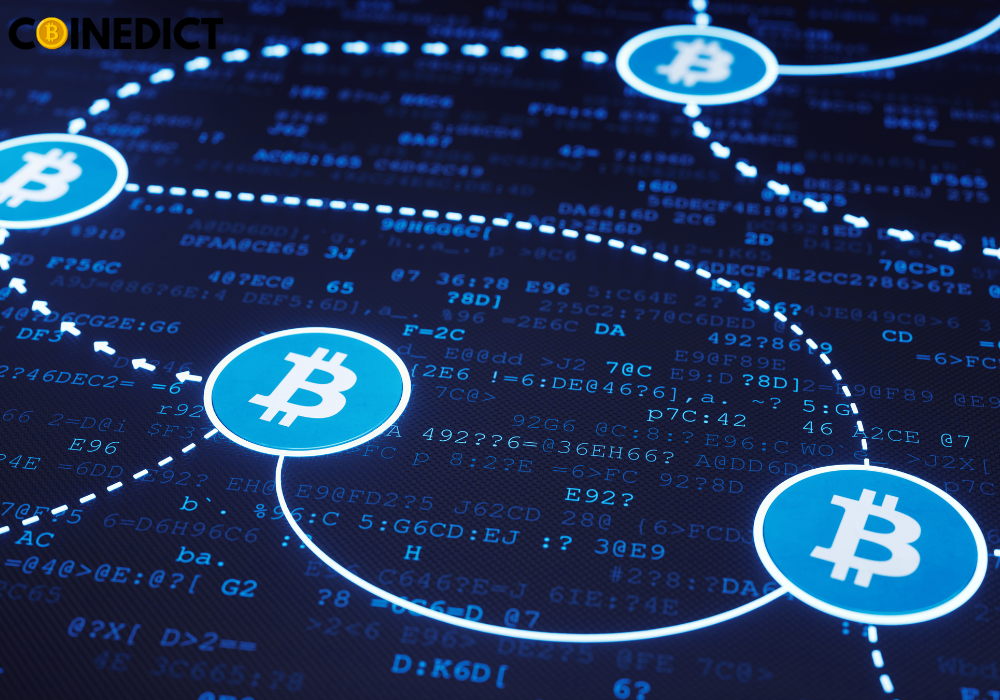In the ever-evolving landscape of global trade, blockchain technology has emerged as a promising solution to enhance transparency, security, and efficiency. However, like any emerging technology, blockchain-based trade networks face their own set of challenges. Among these challenges, scalability and speed are crucial factors that must be addressed to unlock the full potential of blockchain in revolutionizing trade processes. In this article, we will explore the obstacles related to scalability and speed in blockchain-based trade networks and discuss strategies to overcome them.
Introduction
Blockchain technology has emerged as a promising solution for enhancing transparency and efficiency in trade networks. However, scalability and speed remain significant challenges in blockchain-based trade networks. In this article, we will explore the challenges associated with scalability and speed and discuss strategies to overcome them.
Scalability Challenges in Blockchain-Based Trade Networks
- Increasing Transaction Volume: As trade networks grow, the number of transactions processed on the blockchain increases, leading to congestion and slower processing times.
- Block Size Limitations: Blockchain networks have fixed block sizes, limiting the number of transactions that can be included in each block.
- Network Latency: The time taken for transactions to propagate across the network can impact scalability, especially in geographically dispersed trade networks.
Overcoming Scalability Challenges
To address scalability challenges in blockchain-based trade networks, the following strategies can be employed:
Implementing Sharding Techniques
- Sharding involves dividing the blockchain network into smaller subsets called shards, each capable of processing a portion of the transactions.
- Sharding enables parallel processing, significantly improving scalability and transaction throughput.
- By distributing the workload across multiple shards, the network can handle a larger number of transactions.
Utilizing Layer 2 Solutions
- Layer 2 solutions, such as payment channels and sidechains, can be implemented to offload transactions from the main blockchain.
- These solutions enable faster and more cost-effective transactions by reducing the amount of data that needs to be stored on the main chain.
- Layer 2 solutions provide scalability while maintaining the security and integrity of the underlying blockchain.
Consensus Algorithm Optimization
- Consensus algorithms play a crucial role in maintaining the security and integrity of blockchain networks.
- Exploring alternative consensus algorithms, such as Proof of Stake (PoS) or Delegated Proof of Stake (DPoS), can enhance scalability and speed.
- These algorithms require less computational power compared to traditional Proof of Work (PoW), enabling faster transaction processing.
Blockchain Partitioning:
- Blockchain partitioning involves dividing the network into smaller segments or shards, each capable of processing a subset of transactions.
- By distributing the computational load across multiple shards, scalability can be improved as each shard can process transactions in parallel.
- Advanced techniques like dynamic sharding or adaptive partitioning algorithms can further optimize the distribution of transactions based on network demand.
Optimizing Data Structures:
- Optimizing the data structures used within the blockchain can greatly enhance scalability.
- Implementing efficient data storage mechanisms, such as compressed storage or efficient indexing techniques, reduces the storage requirements and speeds up data retrieval.
- Utilizing advanced data structures like Merkle trees or Patricia trees can optimize data validation and integrity checks, improving overall scalability.
State Channel Networks Expansion:
- Expanding the adoption of state channel networks can alleviate scalability challenges.
- State channels allow participants to conduct numerous transactions off-chain, reducing the burden on the main blockchain and enhancing scalability.
- Promoting the development and adoption of state channel infrastructure and compatible applications can facilitate faster and more efficient trade transactions.
Enhancing Transaction Speed
4. Hardware Optimization:
- Utilizing specialized hardware, such as application-specific integrated circuits (ASICs) or graphics processing units (GPUs), can significantly improve transaction speed.
- These hardware solutions are designed to perform specific blockchain-related computations more efficiently, accelerating transaction processing and verification.
5. Parallel Validation:
- Implementing parallel validation techniques enables multiple nodes to verify different transactions simultaneously.
- By distributing the validation workload among multiple nodes, transaction processing speed can be greatly increased.
6. Cryptography Optimization:
- Optimizing cryptographic algorithms and techniques used within the blockchain can enhance transaction speed.
- Utilizing more efficient hashing algorithms or optimizing signature verification processes can reduce the computational overhead and improve transaction processing time.
Speed Challenges in Blockchain-Based Trade Networks
- Confirmation Times: Blockchain networks typically involve longer confirmation times compared to traditional systems, which can hinder real-time trade activities.
- Network Congestion: Increased network traffic can lead to delays in transaction confirmation and impact the speed of trade operations.
Enhancing Speed in Blockchain-Based Trade Networks

To improve the speed of blockchain-based trade networks, the following measures can be implemented:
Network Optimization
- Optimizing the network infrastructure, including protocols and network architecture, can enhance transaction speed.
- Improving the efficiency of data propagation across the network reduces latency and improves overall network performance.
- Implementing advanced networking techniques, such as peer-to-peer protocols, can facilitate faster transaction confirmation.
Smart Contract Optimization
- Smart contracts play a vital role in trade networks, but complex and inefficient smart contracts can impact transaction speed.
- Optimizing smart contracts by streamlining code and reducing unnecessary computations can significantly improve transaction processing time.
Off-Chain Processing
- Off-chain processing involves moving certain transactions or computations off the main blockchain.
- By performing non-critical or computationally intensive tasks off-chain, transaction speed can be increased.
- Off-chain solutions can include payment channels, state channels, or sidechains.
Blockchain Interoperability and Scalability
- Interoperability Challenges: Achieving interoperability between different blockchain networks is crucial for seamless trade operations. However, integrating multiple blockchains poses scalability challenges due to the need for data synchronization and consensus mechanisms across networks.
- Cross-Chain Communication: Cross-chain communication protocols, such as atomic swaps or relay chains, can facilitate interoperability and scalability by enabling secure and efficient transactions between different blockchains. These protocols allow assets and data to be transferred across multiple chains, enhancing the overall scalability of blockchain-based trade networks.
- Layered Blockchain Architectures: Layered blockchain architectures, such as the Polkadot network, provide a scalable solution by allowing independent chains, called parachains, to operate in parallel. Each parachain can focus on specific functionalities, optimizing performance and scalability.
Improving Transaction Speed in Blockchain-Based Trade Networks
- Consensus Protocol Enhancements: Further advancements in consensus protocols can significantly enhance transaction speed. Protocols like Directed Acyclic Graphs (DAGs) eliminate the need for blocks and enable multiple parallel transactions, improving throughput and reducing confirmation times.
- Caching and State Channels: Caching mechanisms and state channels allow parties to conduct frequent transactions off-chain while ensuring the final settlement on the main blockchain. This approach reduces the load on the blockchain, enhancing transaction speed and efficiency.
- Optimized Data Structures: Utilizing optimized data structures, such as Merkle trees or Bloom filters, can improve the efficiency of data storage and retrieval in blockchain-based trade networks. These structures enable faster verification of transaction validity and reduce the time required for block validation.
- Scalable Smart Contract Execution: Enhancing the execution of smart contracts can contribute to faster transaction processing. Techniques like just-in-time (JIT) compilation or parallel contract execution can reduce the computational overhead, leading to improved speed and responsiveness.
Blockchain Scalability Solutions
- Off-Chain Scaling Solutions: Off-chain scaling solutions like the Lightning Network enable the execution of high-volume microtransactions outside the main blockchain. By moving smaller transactions off-chain and settling them later on the main blockchain, scalability can be significantly improved.
- State Channel Networks: State channels allow participants to conduct multiple transactions off-chain, reducing the load on the main blockchain. These channels maintain a temporary state between participants, and only the final outcome is recorded on the blockchain, leading to faster transaction processing.
- Sidechains: Sidechains are separate blockchains that are interoperable with the main blockchain. By offloading specific transactions or data to sidechains, the main blockchain’s scalability can be enhanced, as sidechains can operate with different consensus mechanisms and block sizes.
- Optimized Block Size and Block Interval: Adjusting the block size and block interval parameters can have a significant impact on scalability. Increasing the block size allows more transactions to be included in each block, while reducing the block interval decreases the time between blocks, increasing transaction throughput.
Improving Transaction Speed in Blockchain-Based Trade Networks
- Network Infrastructure Optimization: Upgrading network infrastructure, such as using high-performance servers and improving internet connectivity, can reduce network latency and enhance transaction speed in blockchain-based trade networks.
- Efficient Data Storage and Retrieval: Utilizing advanced data storage and retrieval techniques, such as distributed file systems or content delivery networks (CDNs), can accelerate the retrieval of transaction data, improving overall transaction speed.
- Parallel Transaction Processing: Implementing parallel transaction processing techniques, where multiple transactions are processed simultaneously, can significantly boost transaction speed. This can be achieved through multithreading, parallel computing, or distributed processing.
- Advanced Consensus Mechanisms: Exploring novel consensus mechanisms specifically designed for high-speed transaction processing, such as byzantine fault tolerance (BFT) algorithms or asynchronous consensus protocols, can improve transaction speed without compromising security.
Conclusion
Scalability and speed are pivotal challenges that blockchain-based trade networks must overcome to realize their full potential. By addressing these challenges through strategies like blockchain interoperability, cross-chain communication, layered architectures, consensus protocol enhancements, caching mechanisms, optimized data structures, and scalable smart contract execution, the efficiency and scalability of blockchain-based trade networks can be significantly improved.











